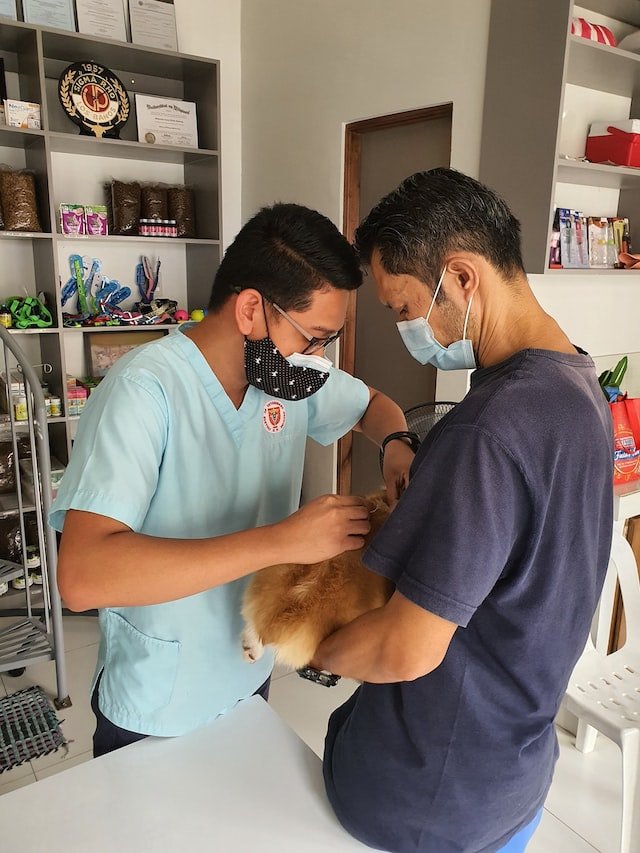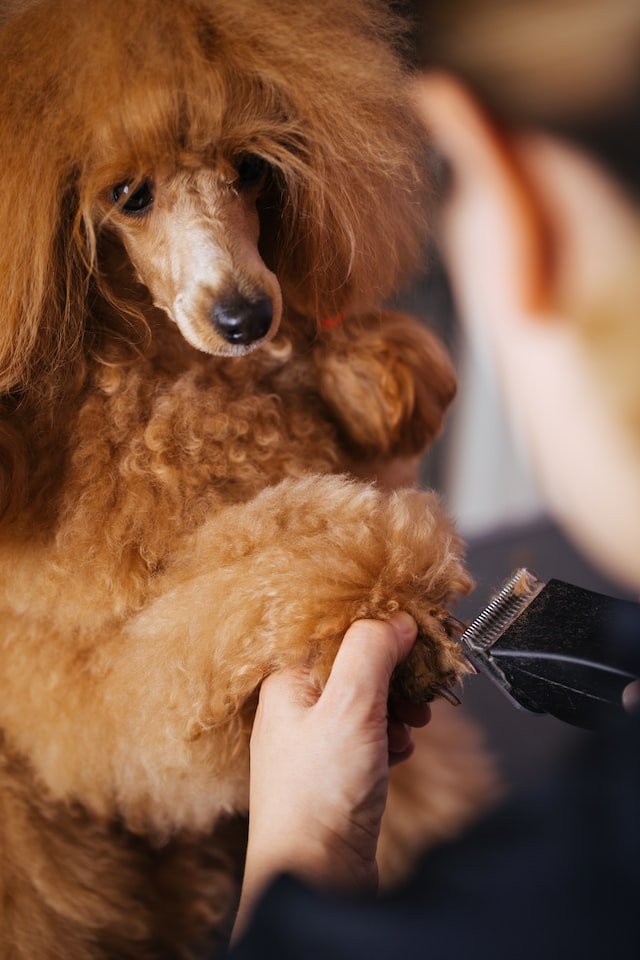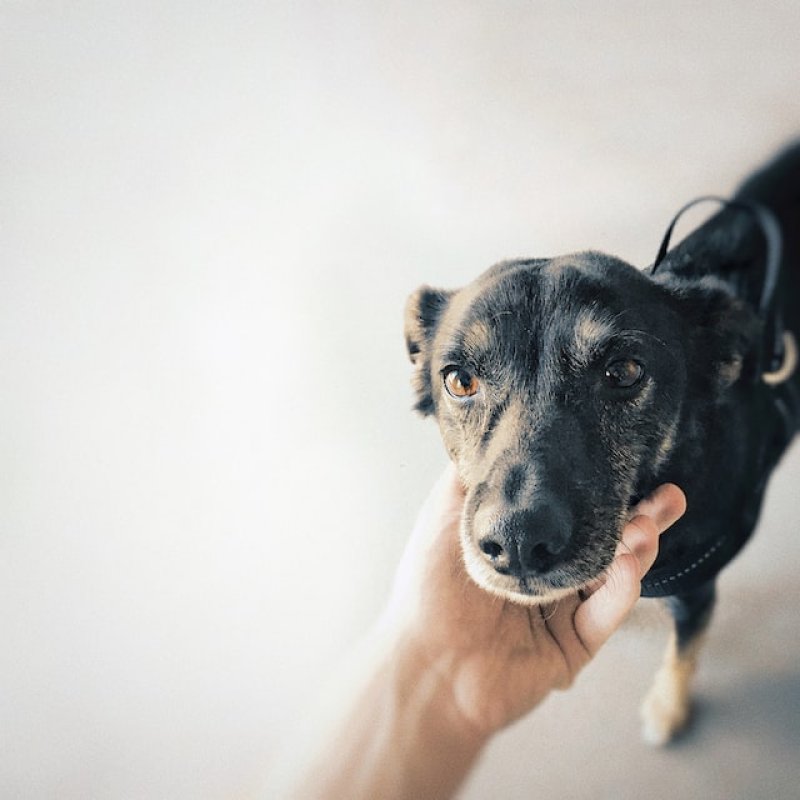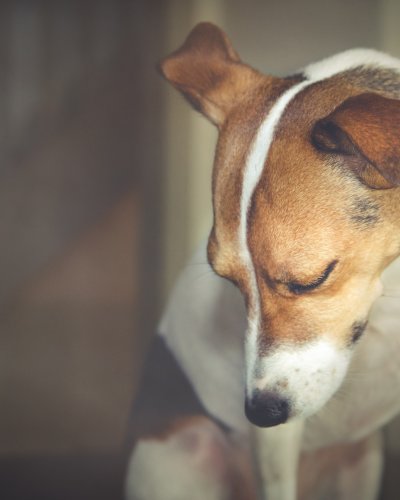Canine Cooperative Care and how to gain your Pets Trust
Approaching any treatments on pets with the desire for them to be willing participants in these processes has been gaining popularity for decades. This is the essence of canine cooperative care—respecting our dogs’ right to express dissatisfaction and working to gain their trust in situations that are for their physical and emotional well-being.
What is Cooperative Care?
Cooperative care refers to dog training (or other animals) that results in fear free cooperation. The purpose is to help dogs gain confidence as they learn to tolerate husbandry processes necessary for their care willingly. The handler is responsible for carefully observing the dog's behaviour for signs of communication and stress signals, replacing suspicion with trust, confidence and active participation in the husbandry process through positive reinforcement.
Through practice and training, we teach dogs to not only tolerate specific handling and husbandry procedures of their owners, veterinary professionals, or anyone else but also to participate in them voluntarily. To be prepared to endure discomfort, the dog must learn that it is in a safe environment where its emotions will be respected. The most important aspect of cooperative care concepts is to accept dogs’ active and cooperative role in their care, recognise when the dog has shown an emotion of discomfort during the procedure, and respect the dog's right to say "no".
This approach gives dogs a sense of control over any treatments performed on them (for example, veterinary, grooming, or therapeutic procedures), which results in their easier acceptance of such procedures because it enables them to alleviate fear and communicate from a stress-free zone of comfort.
Why Does Cooperative Care Matter?
Dr Deborah Jones, a psychologist who specialises in social behaviour and learning theories, points out that teaching the dog at least the basic behaviour for cooperative care in advance is essential. All dog owners will, at some point, perform a task on their pet that could be physically or emotionally uncomfortable. The dog's willingness to participate in and tolerate handling can be demonstrated by its ability to remain calm and still during husbandry processes.
When the dog exhibits a sense of self-control and security and does so fear free during an unpleasant situation, it has a calming effect on everyone, both people and animals. Teaching dogs how to communicate their feelings or will so both parties can interpret communication correctly allows humans and canines to work cooperatively, reducing the dog's stress or fear.
Practising cooperative care increases the self-confidence of dogs’ during veterinary examinations, grooming, therapy, or home treatments such as nail trims, ear cleaning or administering eye drops, which, sooner or later, the owners will have to carry out and may be unpleasant for the dog.
Pet owners often assume that if they allow their dog a sense of control in an uncomfortable situation, the dog will refuse to cooperate. However, when cooperative care exercises are carried out correctly and are associated with a positive experience, it has been shown that dogs willingly agree to participate in experiences that would otherwise cause them restlessness and anxiety, directly improving their quality of life.
In addition to improving the dog's well-being, through consideration of their emotional state, safety while handling them during the procedure is also increased. This approach reduces the risk of injury, both for humans and animals.
When Is Cooperative Care Useful?
In action, cooperative care training makes for stress free husbandry whilst building a strong bond between handler and animal. Connecting on a deeper level and clearly understanding the dog's readiness to begin and emotional reactions are skills that can be transferred to other training areas.
However, it is necessary to understand that cooperative care can only be learned in a calm and safe environment, not when the dog is already in distress. For example, if you must rush to the vet, leave the beginning of the cooperative care exercises until the dog has recovered and is ready to focus on learning again. In an urgent situation, we would create additional stress for the dog by asking it to start learning cooperative care. In that case, low-stress procedures or even sedation by a veterinarian may be necessary. Once your dog is healthy and calm again, you can start working on cooperative care for all future vet visits to be more accessible.
Here are some examples of when cooperative care can prove to be a practical and welcome skill:
Trips to Vet and Veterinary Procedures

For some owners and dogs, visits to the vet can be stressful and anxiety-inducing. However, many dogs rarely need veterinary care other than a yearly check-up. So the clinic's unfamiliar surroundings can be overwhelming or even encourage the development of negative associations. Being touched by strangers, seeing other dogs and animals, getting examined, and enduring procedures that can be painful (for example, vaccination, blood draw)—all these can automatically cause a withdrawal reaction in a dog, or sometimes even aggression (resulting from a lack of understanding, fear and pain).
A dog that has undergone cooperative care training will feel safer in such situations because it knows that the owner or person handling it will adequately react in case of communicating a clear "no". However, the veterinary team must also respect the dog's reaction, which is not always possible because some interventions cannot be stopped once they start. Therefore, a middle ground should be found. However, even in such situations, a dog that knows its will is recognised will feel a greater sense of control and calm.
Therapists or Grooming Procedures

Another situation when a dog must endure being touched by unknown people is during canine therapists' or grooming treatments. These treatments may not be physically painful but can sometimes be uncomfortable. The dog is often expected to exhibit self-control for an extended period so the treatment can be performed thoroughly.
Avoiding specific procedures because they cause anxiety and fear in the dog can lead to serious health problems in the long run. One such example, which many dogs struggle to tolerate and handlers lack confidence in, is nail trimming.
Dogs' nails are constantly growing and need to be maintained. Nails that are too long affect the dog's gait. In a benign situation, they can create discomfort, while over time, they can cause changes in dogs' muscular-skeletal systems. Our article on Canine nail length discusses some health complications resulting from neglecting or avoiding nail care because the dog cannot tolerate such treatments.
Training cooperative care behaviours is an ideal solution in a situation like this. The dog learns that it is a safe zone and has control over when they want the process to be paused or stopped. Cooperative care makes it possible to reduce stress and turn such experiences into positive ones.
Learning Cooperative Care Behaviours
Cooperative care behaviours, apart from being beneficial for all dogs (pet dogs, canine athletes, and working dogs), can also be fun to train. The primary goal of these exercises is to relieve both handler and canine stress, turning unpleasant processes into positive ones. In the beginning, it takes more time, but once the dog has mastered the basic skills of the concept, things go much faster. In that stage, cooperative care can be learned to apply in various situations.
When training, you should remember that dogs understand complex tasks more quickly if we break them into smaller parts. When the dog learns one part of the task, we expand it to a new one and then link the two. The task elements must be easy enough for the dog to learn because, otherwise, it will create a feeling of frustration.
Although the important thing for us is to teach our dogs a new skill for their and our long-term well-being, the dogs' priority is usually something else treats! Animal behaviourists and dog trainers such as Susan Garrett emphasise the importance of shaping behaviour through choice. Good choices on the dog's behalf are rewarded, with initial steps making the choice easy and gradually increasing the difficulty, such that the dog decides to cooperate even with high-level distractions.
The cooperative care method of training respects your dog's will, which means that you are ready to stop the training process if your dog shows signs of stress, discomfort, anxiety, or something else. To gain its trust, you must respect your dog's decisions. With this approach, you not only teach the dog to listen to you, but you also teach yourself to perceive the signals that your dog sends you.
Cooperative Care Behaviours at Home?
Handlers can start teaching their own dog cooperative care behaviours at home; the chin rest is a great one to begin with. This behaviour is beneficial for trips to the vet and during therapeutic treatments, as it helps the dog to relax and feel connected with its handler.
Cooperative care exercises like the chin-rest can be practised multiple times a day, and it is wise to practice in different environments, as this helps build a strong behaviour. The dog is taught to keep its chin in one place, most often in the handler's hand or in a lap and to remain calm for a certain period while specific treatment is performed.
One method to teach the chin rest is...
Step one: Build Value for the position
Put a pillow in your lap and place a treat on the pillow. The moment the dog takes the treat, mark with the word ‘Yes’ and give them another treat. Immediately when the dog has eaten the treat give the dog a release clue, such as "Break" and simultaneously toss a treat off to the side so the dog such that the dog sees the treat moving through the air and goes to retrieve it. Whilst the dog is away getting that treat, place another on the pillow so the dog drives back to the pillow. – repeat several times, so the dog learns there is value for the pillow
Step two: Make it their choice
In this step, we remove the lure treat. Position the pillow and allow your dog a moment to think about their choice. Focus your gaze on the lap pillow and start shaping the chin rest. If you have built enough value for the pillow the dog should come and place their chin on it. Other dogs may need to be rewarded for incremental steps in developing the behaviour: looking at the pillow, touching the pillow with its nose, and touching the pillow with its chin. Remember to release the dog by giving them a release cue and tossing the treat off to the side.
Step three: Label the behaviour
When your dog starts moving its chin down, and you're sure it'll do a chin rest, label the behaviour by saying "Rest" or another cue just as its chin hits your lap. Reward your dog after holding its head on the pillow for a few seconds.
Step four: Increase the duration
Slowly increase the length of time the dog holds the chin in position before marking and rewarding. Increase the duration of this behaviour gradually.
Step five: Add distractions
Once your dog can hold the chin rest position for 10-20 seconds, start adding some handling to the exercises. Reach down and pat your dog on the back—mark and reward if they hold their position. If your dog breaks the position, stop the process, and ask or wait for another chin rest to try again. Remember, your dog must learn that breaking the position will stop the handling.
It would be best if you always respect your dog's desire to say "no" because this is the only way for your dog to understand that this is a safe zone in which its wishes are respected. It's also a place for your dog to realise a reward follows the desired behaviour!
This fun approach to cooperative care training creates an environment of safe communication and trust. Dogs become aware that they have the right to choose and know how to communicate their will, which also reassures them because they feel in control of the situation.









Leave a comment